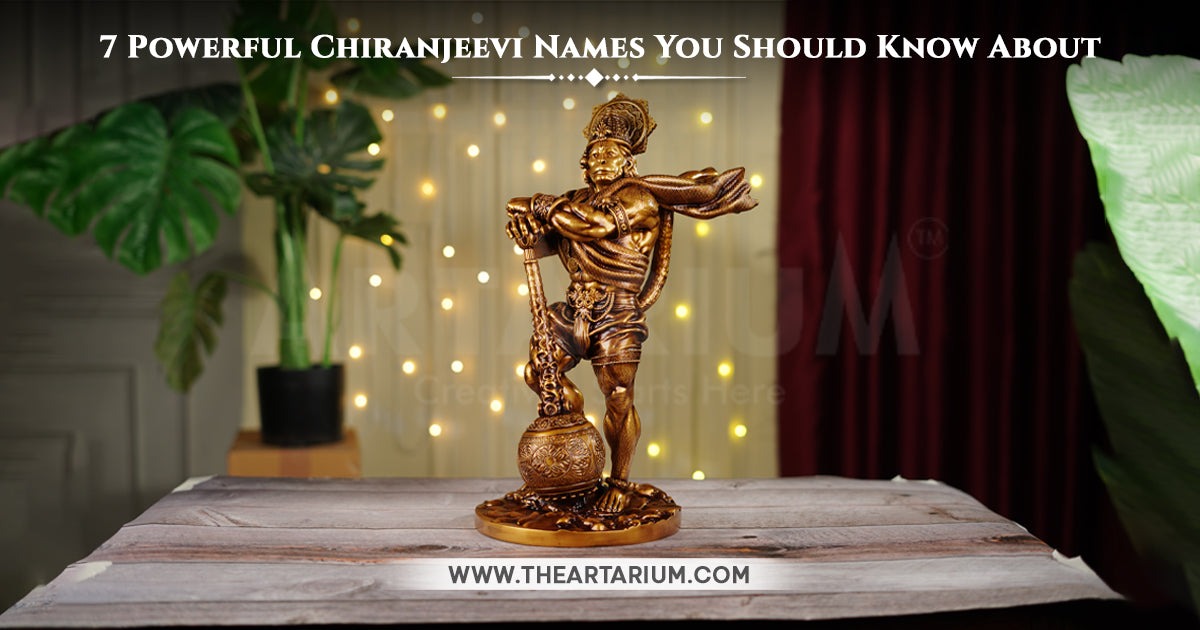Do you know that seven of the most powerful figures from Hindu mythology are still present on Earth? These were granted the boon of immortality in order to save the world when evil prevailed and Dharma was put at stake.
This blog will help you learn more about each of the 7 immortals uncovering some interesting facts and stories about them.
List of the 7 Chiranjeevi (Immortals)
1. Ashwathama

Ashwathama was the son of Dronacharya, the revered teacher and warrior who served as the military teacher to the Kauravas and Pandavas. Ashwathama fought on the side of the Kauravas in the great Kurukshetra war against the Pandavas.
One of the most infamous incidents involving Ashwathama occurs on the 18th day of the war when he is tricked into believing that his father, Dronacharya, has been killed by the Pandavas. Enraged and seeking revenge, Ashwathama brutally attacks the Pandava camp, killing many of their warriors, including the sons of the Pandavas and other important figures.
After the war, Ashwathama is chased by the Pandavas for his actions. In some versions of the story, he is cursed by Lord Krishna to roam the earth for thousands of years in extreme suffering for his misdeeds. Despite being immortal, Ashwathama’s existence is one of perpetual torment and solitude.
Ashwathams is often portrayed as a complex character, torn between loyalty to his father and his own sense of duty. His story is a reminder of the consequences of unchecked anger and the importance of understanding one’s actions.
2. Mahabali
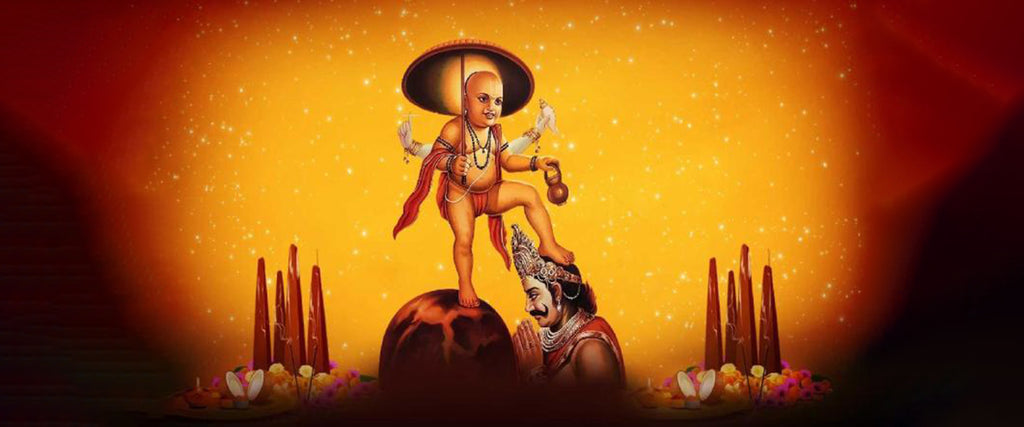
Mahabali, also known as Bali, was a powerful demon king in Hindu mythology. He was the grandson of Prahlada and the son of Virochana. Bali was known for his generosity, courage, and devotion to lord Vishnu.
One of the most famous stories associated with Mahabali is the tale of his conflict with Lord Vishnu, who approached him in his Vamana (dwarf) avatar to test him. Vamana approached him during one of his grand sacrificial rituals and asked for a piece of land that he could cover with three steps.
Mahabali agreed to his request, but as soon as Vamana took his giant form, he covered the earth in one step and the heavens in the next. When there was no space left for the third step, Bali offered his own head as a stepping stone. Impressed by Bali’s sacrifice and devotion, Vishnu granted him a boon that allowed him to visit his kingdom and people once a year, which is celebrated as the festival of Onam in Kerala, India.
Hence, it is believed that Mahabali visits his kingdom every year on the day of Onam to justify his presence.
Also Read Who are the Most Powerful Gods in Hinduism
3. Ved Vyasa

Ved Vyasa, also known as Krishna Dvaipayana Vyasa, is considered the author of the Mahabharata, one of the longest epic poems in the world.
He is believed to have lived during the Dvapara Yuga, the third of the four yugas or ages in Hindu cosmology. He was the son of sage Parashara and Satyavati, who later became the wife of King Shantanu of Hastinapur.
The name Vyasa itself means ‘arranger’ or ‘compiler’, indicating his role in arranging the Vedas into their present form. It’s said that he divided the Vedas into four parts – Rigveda, Samaveda, Yajurveda, and Atharvaveda and further taught them to his disciples.
However, Ved Vyasa is most famous for being the author of the Mahabharata, one of the longest epics that narrate the story of the great Bharata dynasty, focusing primarily on the conflict between the Pandavas and the Kauravas. Vyasa is considered both the narrator and a character within the Mahabharata.
Apart from the Mahabharata, Ved Vyasa is also credited with composing the eighteen Puranas which are ancient texts containing mythological stories, cosmology, philosophy, and genealogies of gods, kings, and sages.
4. Lord Hanuman
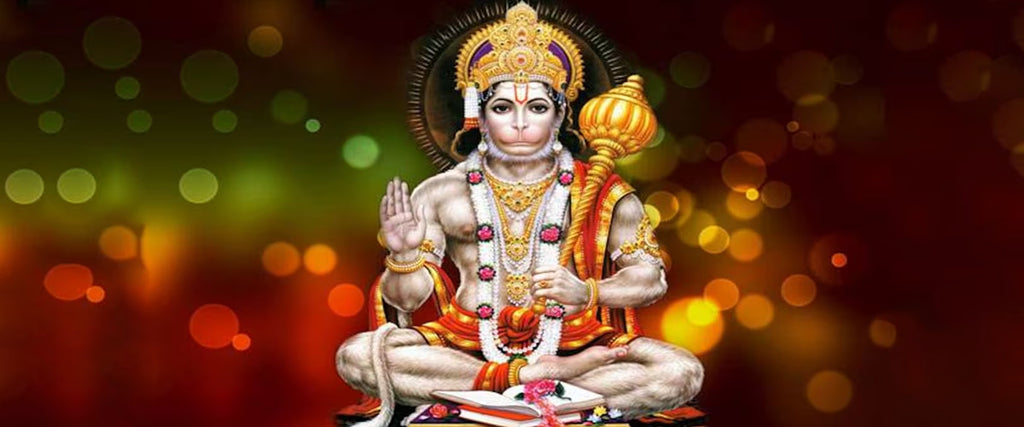
Bahubali Lord Hanuman is the monkey-faced deity known for his strength, perseverance, and unwavering devotion to Lord Ram. he was born to Anjana, a celestial nymph, and Kesari, the king of monkeys.
Hanuman’s most famous exploits are narrated in the Indian epic Ramayana. He plays a crucial role in the story by helping Lord Rama in his quest to rescue his wife, Sita, from the demon king Ravana. Hanuman’s loyalty, strength, and intelligence are showcased throughout the epic, making him one of the most beloved characters in Hindu mythology. Hanuman possessed incredible strength and powers, he could change his size at will, fly across great distances, and had the ability to carry mountains and leap across oceans.
5. Vibhishana
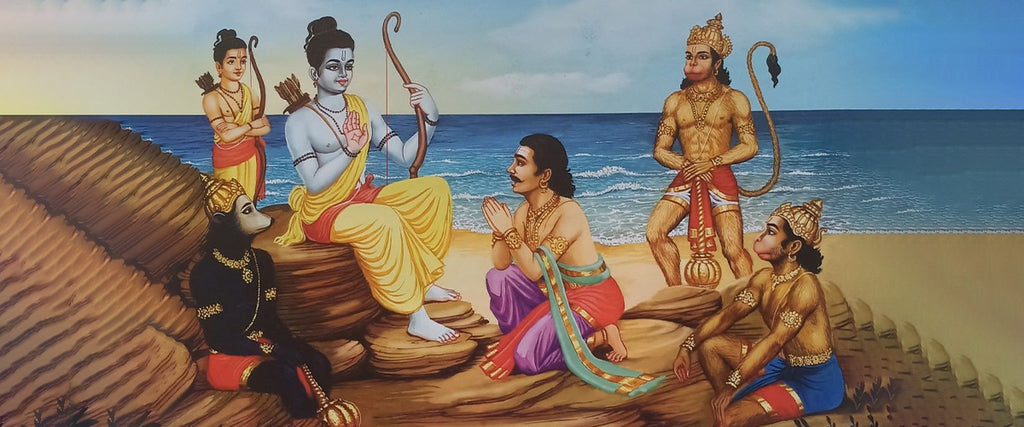
Vibhishana was the younger brother of Ravana, the demon king of Lanka. However, despite being part of Ravana’s kingdom, Vibhishana disagreed with his brother’s evil ways and advised him to return Sita, Lord Rama’s wife, whom Ravana had kidnapped.
When Ravana refused to listen to reason, Vibhishana decided to leave Lanka and join Lord Rama’s side. Lord Rama, impressed by Vibhishana’s righteousness, told him to ask for a boon. To this, Vibhishana only requested Rama to allow him to remain fixated on his feet, all devoted to his service. Seeing such faithfulness and commitment to Vibhishana, Rama granted him the boon of immortality and made him the king of Lanka (present-day Sri Lanka).
Also Read 10 Avatars of Ram Lalla Idol at Ayodhya Ram Mandir
6. Parashurama

Parashurama, the sixth avatar of Lord Vishnu is revered as a great warrior and sage. The name Parashurama means Rama with the ax. He is often depicted carrying an ax, which he used to eradicate the Kshatriya warrior caste from the earth. According to legend, Parashurama was born to the sage Jamadagni and his wife Renuka.
One of the most famous stories about Parashurama is his conflict with the Kshatriya king Kartavirya Arjuna. Kartavirya Arjuna, also known as Sahasrarjuna, once visited Jamadagni’s ashram and was impressed by the sage’s hospitality. He demanded the magical cow Kamdhenu, which could fulfill all wishes, from the sage. When Jamadagni refused, Kartavirya Arjuna took the cow by force.
Angered by this act, Parashurama vowed to rid the world of Kshatriyas. He killed Kartavirya Arjuna and his army and then embarked on a quest to cleanse the earth of the Kshatriya caste. He is said to have killed the entire Kshatriya community 21 times, filling five lakes with their blood.
However, he became Chiranjeevi due to a boon he received from Lord Shiva. According to the legend, after Parashurama had completed his mission of eradicating the Kshatriya caste from the Earth, he approached the sage Kashyapa to perform a yajna to cleanse himself of the sin of killing.
During the yajna, Parashurama gave away all his possessions, including the axe he used in the battle. Pleased with Parshurama’s devotion and penance, Lord Shiva appeared before him and granted him the boon of immortality. This boon made Parashurama one of the Chiranjeevi’s, ensuring that he would live on Earth for as long as the Kaliyuga would last.
7. Kripacharya
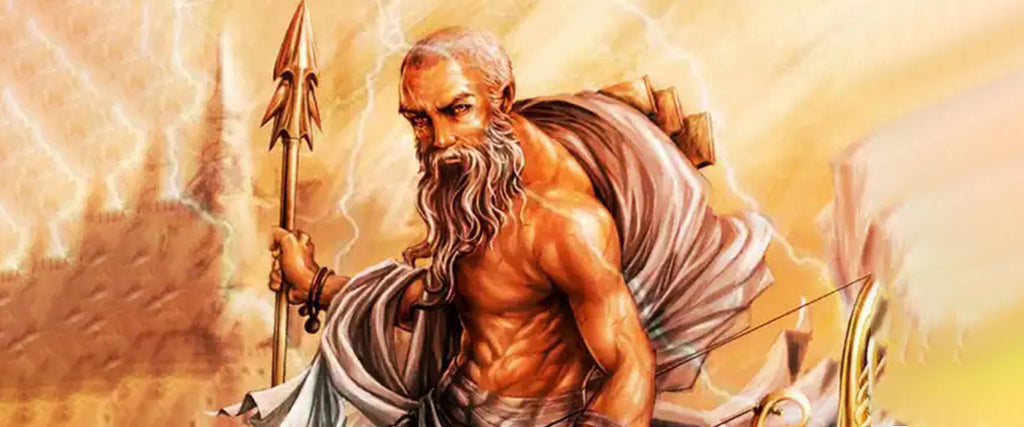
Kripacharya was the son of Shardwan and Janapadi, and he was raised alongside his sister Kripi. He became the royal teacher of the kuru princes, including Kauravas and Pandavas, in the epic Mahabharata. However, despite his close association with the Kauravas, Kripacharya was known for his impartiality and adherence to dharma (righteousness). During the Kurukshetra war, he fought on the side of the Kauravas due to his duty as their teacher, but he did not hesitate to criticize them when they deviated from Dharma.
Kripacharya’s loyalty and sense of duty are exemplified in his actions during the war. He was a formidable warrior and fought bravely, earning respect from both sides.
Kripacharya’s immortality is attributed to a boon he received from Lord Shiva. According to some versions of the mythology, he is said to reside in the Himalayas, where he continues to impart wisdom to those who seek it.
Also Read Discovering India’s Top 9 Ram Temples
Conclusion
There’s a famous 7 chiranjeevi shloka in sanskrit which goes like:
सप्तैतान् संस्मरेन्नित्यं मार्कण्डेयमथाष्टमम् ।
जीवेद्वर्षशतं सोपि सर्वव्याधिविवर्जित ॥2 [पद्म पुराण 51/6-7]
अर्थात:
अश्वत्थामा, बलि, व्यास, हनुमान, विभीषण, कृपाचार्य और भगवान परशुराम ये सात महामानव चिरंजीवी हैं।
यदि इन सात महामानवों और आठवे ऋषि मार्कण्डेय का नित्य स्मरण किया जाए तो शरीर के सारे रोग समाप्त हो जाते है और 100 वर्ष की आयु प्राप्त होती है।
The seven Chiranjeevi hold a very important place in Hindu mythology and it is highly believed that worshiping these great figures helps eradicate all diseases and ailments in one’s body and grants longevity.
Frequently Asked Questions (FAQs)
Q1 What are the 7 Chiranjeevi names?
The names of 7 Chiranjeevi are:
- Ashwathama
- Mahabali
- Ved Vyasa
- Hanumana
- Vibhishana
- Parashurama
- Kripacharya.







